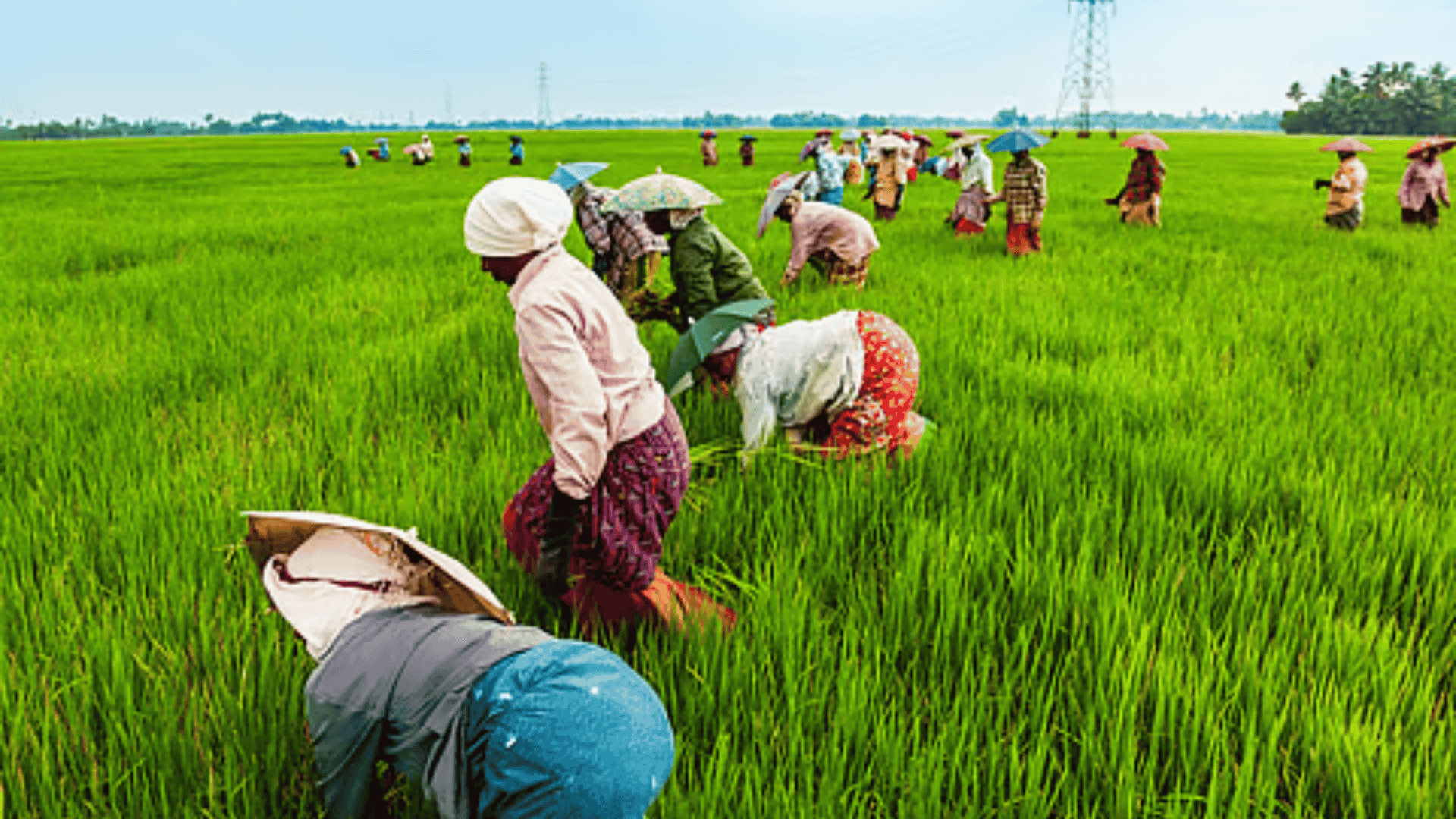India’s First Genome-Edited Rice Varieties: A Scientific Milestone in Agriculture
Indian Council of Agricultural Research (ICAR) scientists have developed the world’s first non-GMO genome-edited rice varieties—DRR Dhan 100 (Kamala) and Pusa DST Rice 1—using CRISPR-Cas9 genome editing technology. These varieties will strengthen India’s food security with traits like 30% higher yield, 40% less water consumption, and climate resilience. Agriculture Minister Shivraj Singh Chouhan hailed this achievement as the "Second Green Revolution" and announced the "Minus 5, Plus 10" strategy, aiming to produce 10 million tonnes more rice using 5 million hectares less land.
DRR Dhan 100 (Kamala): An Advanced Version of Samba Mahsuri
Parent Variety: Samba Mahsuri (BPT 5204), popular in Telangana, Andhra Pradesh, and Odisha.
Scientific Modification: Editing the Cytokinin Oxidase 2 (CKX2) gene increased grain count per plant by 19%.
Key Benefits:
Matures in 130 days (20 days faster than traditional varieties).
25% improvement in drought tolerance and nitrogen use efficiency.
Saves 7,500 million cubic meters of irrigation water.
Pusa DST Rice 1: A Boon for Saline and Alkaline Soils
Parent Variety: MTU 1010 (popular in Andhra Pradesh).
Scientific Modification: Editing the Drought and Salt Tolerance (DST) gene enables 30.4% higher yield in saline conditions.
Key Benefits:
Suitable for coastal saline regions (e.g., West Bengal, Odisha).
Reduces methane emissions by 20% and improves fertilizer efficiency.
Genome Editing vs. Genetic Modification: Technical Comparison
| Parameter | Genome Editing | GMO |
|---|---|---|
| DNA Alteration | Modifies existing genes | Inserts foreign genes |
| Regulation | Exempt under SDN1/SDN2 category | Strict rules (requires GEAC approval) |
| Public Acceptance | High (perceived as natural) | Controversial |
| Examples | DRR Dhan 100, Pusa DST Rice 1 | Bt Cotton |
Source: ICAR Guidelines 2023 and Department of Biotechnology
Government’s "Minus 5, Plus 10" Strategy: Why It Matters
Goal: Reduce rice cultivation area by 5 million hectares while increasing production by 10 million tonnes.
Impact:
Freed-up land to boost oilseed and pulse production, reducing import dependency.
Improves groundwater levels (critical in Punjab-Haryana, where levels drop 2.5 meters annually).
Challenge: MSP incentives keep farmers偏向 rice-wheat cultivation.
Exam-Oriented Key Facts
CRISPR-Cas9 Technology: Uses SDN1 (Site-Directed Nuclease) method without inserting foreign DNA.
Budget 2023-24: ₹500 crore allocated for genome-editing research.
ICAR’s Target: Develop genome-edited wheat, mustard, and pulse varieties by 2030.
Internal Links:
Green Revolution: Achievements and Limitations
CRISPR-Cas9 Technology: Science & Tech Notes
Why This Matters for Your Exam Preparation
UPSC GS Paper III: Directly links to agriculture productivity, water resource management, and biotechnology.
Prelims: Expect questions on CRISPR-Cas9, SDN1/SDN2, and genome-editing mechanisms.
Mains Essays: Topics like "Genome Editing’s Role in Climate-Resilient Agriculture" or "Food Security vs. Environmental Conservation."
Government Schemes: Analyze the "Minus 5, Plus 10" strategy and doubling farmers’ income goals.
Conclusion:
Genome editing positions India to boost agricultural productivity and combat climate change. This topic is highly relevant for UPSC 2025—stay updated with more insights at Atharva Examwise.






